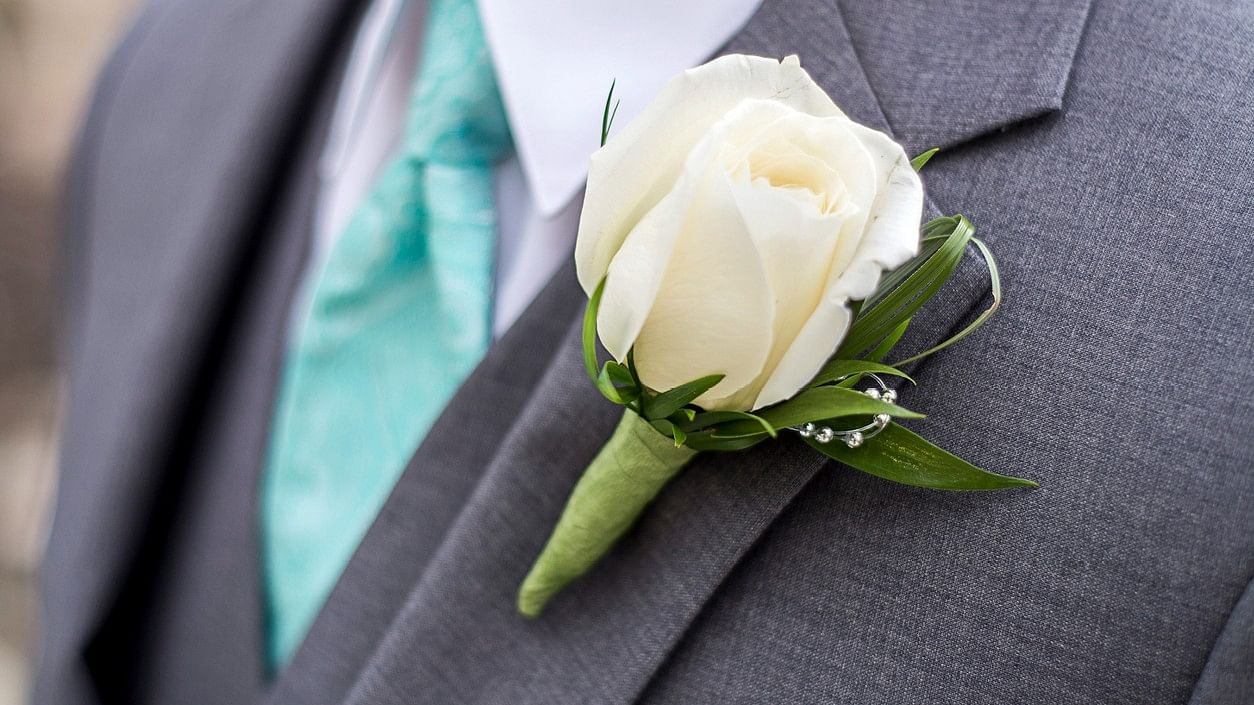
Representative image of a boutonniere.
Credit: iStock Photo
My Italian professor in Michigan, I was told, was taking part in an opera scheduled to be staged at the University auditorium. I asked Bill, a music major, how to greet him on this occasion. He said, “Give him a boutonniere, which he can pin to his jacket lapel.” I asked, “A card with a message won’t do?”
“No. Give him the flower. He’d love it.” Bill kept up the pressure.
On the big day, I entrusted the box containing the boutonniere to the stage manager at the auditorium, requesting that he give it to the addressee, my professor, when he arrived and not reveal my Indian identity before he opened the box. The next day I asked Fernan, another opera participant, for an update: had my professor received a rose? He said, “Yes, he did. He was happy as a child.” I learned later that the professor had worn the boutonniere when he appeared on stage to play his role. An extraordinary gesture!
The next time I thought of ‘saying it with flowers’ was on World Environment Day, June 6, at our institute. I met the staff assigned to keep the premises and its environs clean and green. I complimented them on their success. When I paused, the group surged forward to receive their share from the basket containing flowers from the institute’s own garden. Their happiness was palpable.
When a Parliamentary Committee visited our institute, the children (receiving therapy at the institute) welcomed the members, giving each of them a rose grown in our garden. It was a gratifying experience for all involved!
We were proud of our garden at home, where my mother had put her botanical knowledge to good use. For instance, knowing the seasonal nature of dahlias, she had the bulbs in the flower bed in time for the blooms to become available for the Gowri festival. Once the dahlias’ time was up, their bulbs were dislodged from flower beds and stored; seeds from other plants were collected for future use. Time-bound activities such as trimming, re-potting and propagation of existing plants were taken up under the mother’s watchful eye. Periodically, the garden was replenished with newer varieties. We were assigned the daily task of collecting flowers such as the hibiscus and parijatha (coral jasmine) from our garden and keeping them ready for the morning puja. Jasmine varieties were strung together for the womenfolk to adorn their hair with. I recall going to school with flowers in my hair and taking some for the teachers too!
My late father, Professor Nikam, always welcomed guests with flowers. On one such occasion, I had accompanied him (he was then V-C of Mysore University) to the airport to receive Dr C D Deshmukh (the then-Chairman of the UGC) and his wife. Looking at the colourful flowers, Mrs Deshmukh expressed her desire to grow them in New Delhi. Dr Deshmukh quipped, “Then you must also transport the climate.”